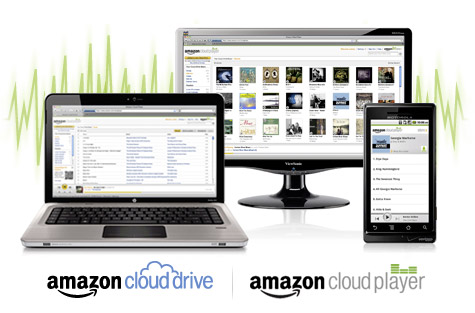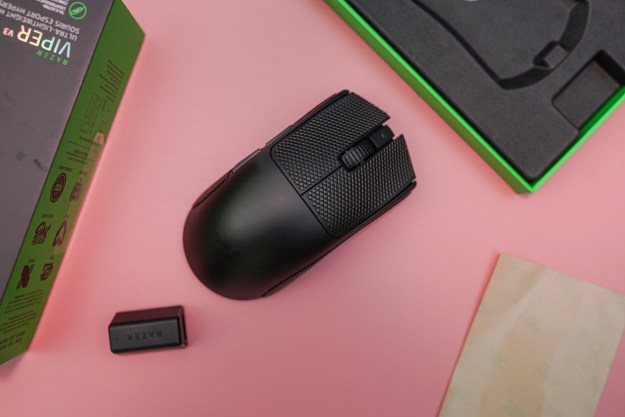
The last few months have seen the emergence of three different services from big players designed to give users cloud-based access to their personal music libraries. With smartphones, tablets or iPads, laptops, and home computers, it’s no wonder that consumers are looking for a better way to store and have access to their often large libraries of digital music. Amazon was the first to announce its Cloud Drive storage service a few months back, and it’s the only cloud-based music service that is completely available to users as of today. Google recently announced its highly-anticipated Google Music Beta service, but like the name suggests, it’s still in an invite-only beta testing stage, although anyone can request an invite and hope to be chosen. To round out the group of three, Steve Jobs announced Apple’s iCloud service last week at WWDC, which offers a host of cloud-storage features including the speculated iTunes integration. While it will be hard to tell which service will win out in the end until all three are available for full use, there are significant difference between the services that users and music lovers should be aware of.
Price and availability
Amazon Cloud Drive
Amazon is offering 5GB of storage for free to anyone with an Amazon account, but we all know that that will only cover a fraction of most users’ libraries. You can store 20GB for $20 a year, and extra storage beyond that costs about $1 per GB in increments of 50, 100, 200, 500, and 1,000. If you have less than 20GB of music it’s not a bad deal, but if your library is larger than that you might be paying more than you’d like. One plus is that songs purchased through the Amazon MP3 store won’t count towards your storage limits. Like we mentioned before, the Amazon service is the only one that’s fully available to the public currently.
Google Music Beta
The Google service is invitation-only for now, but will roll out to consumers in the near future and intrigued Google fans can always request an invite to test the service. Music Beta is the only totally free service, but it’s unclear whether that will stay true when the service is fully unveiled to the public. Because of Google’s history of keeping things free, we expect the service to come in at a very user-friendly price tag. We wouldn’t be surprised if Music Beta offered a limited amount of storage to users for free, similar to Amazon.
Apple iCloud
The full functionality of iCloud won’t be available until the fall, so we have a while to wait before we will see the success or failure of Apple’s foray into storing music in the cloud. In the big picture, iCloud will be free, but there’s a small catch. While iCloud will offer unlimited iTunes storage in the cloud for free, many users may want to use a companion service called iTunes Match to take full advantage of the service. Initially, iCloud will scan your iTunes library and put any song purchased in iTunes into the cloud. Other songs can be manually uploaded, or users can use iTunes Match, which will try to find a match for all of the non-iTunes songs in your library in the iTunes store. As long as there is a match in the store, you will get all the benefits of having the song in iCloud, just like a song you purchased through iTunes. The matching service will cost users $25 each year.
Getting your music in the cloud
Amazon Cloud Drive
When you first join the Cloud Drive service on Amazon, in the Cloud Player you will be asked to download an Adobe Air app to select and upload your files. We had continued trouble with this app and when it did work, it was painfully slow. We soon discovered that the Cloud Drive site also had another option that used an explorer window to select and upload files. This option worked out better, but if you have a large music library, the uploading process is still going to take a significant amount of time, most likely days. When using the explorer window option, which was faster, we also found that using this method means none of the vital metadata from your songs and albums gets pulled in. This can leave you with countless songs by “Unknown” and no one wants that.

Google Music Beta
Google’s approach here is very similar to Amazon’s, but seems to have fewer problems. Users must download a small piece of Music Manager software to begin the process of uploading their libraries onto Music Beta. The software worked smoothly when we tested it, but users have no control over what songs get uploaded other than choosing between the iTunes folder or ‘Other Folders.’ Refining that control will be something that Google will want to fix in the near future. Also much like Amazon, the upload process is terribly slow. For a music library of thousands of songs, expect it to take several days, if not a whole week, to upload your entire library.

Apple iCloud
Apple has a clear advantage here from what we’ve first heard about the service. While you will have to be on an iOS device or have iTunes running on a PC, which means no streaming through an internet browser, iCloud won’t require any slow uploading process like the competitors. The service will simply scan your iTunes for songs you bought through the iTunes store, or use iTunes Match ($25/year) to find songs that you acquired elsewhere. There will be an option to manually upload songs if you don’t want to fork over the money for iTunes Match, but overall the process here seems like it will be much faster for users.

User interface and features
Amazon Cloud Drive
As one would expect, both the Amazon and Google interfaces take inspiration from the basic iTunes design. Amazon’s design seems to be a mix of that basic template and the one that Pandora uses. We have nothing bad to say about the interface, other than it looks a bit dated and isn’t as sleek as some other options. As far as features go, Amazon has the benefit of being the service that’s been around the longest and is open to the public. Besides the basic features of cloud storage and streaming via web or an Android device, Amazon has taken the approach of giving loyal Amazon users extra benefits. For instance, you get 5GB of free storage, but if you buy an MP3 album from the Amazon MP3 store, you get bumped up to 20GB of free storage for a year. Other purchases from the Amazon store are also stored in the cloud for free. If you never buy music from Amazon, you might be getting the short end of the stick with this service. Cloud Drive also does not pull in iTunes playlists or let users rate songs with either a star rating or a thumbs-up/thumbs-down.

Google Music Beta
The Music Beta interface is a bit cleaner than the Amazon one, and everything about it is intuitive and user-friendly. Unlike Amazon’s system, Music Beta will automatically pull in playlists from your iTunes and list them on the lefthand sidebar. Music Beta also has automatic “Thumbs Up” and “Recently Added” playlists on the sidebar. One of the better features that Google has added is “Instant Mixes,” which is a take on Apple’s “Genius” playlists. If you’re listening to a song you’d like to build a playlist around, just select “Create Instant Mix” and Google will intuitively create an automatic playlist based on that song. For people who like to sit back and relax while listening to a variety of artists to suit their mood, this function is a huge plus. A unique feature of Music Beta is the ability to add free songs to your cloud library when you join, or stream them at any time. While we think most serious listeners will pass this option up, it’s a nice perk for those with smaller libraries who might want to spice things up.

Apple iCloud
While we can’t comment in full until we get a chance to try out iCloud, Apple does stand out from the pack for several different reasons in terms of features. Unlike Amazon and Google, you won’t be able to stream music in a browser window, but only on an iOS device or a PC running iTunes. For Apple users this will only mean that they can access the cloud service easily on all devices, so no problem. For PC users or those with non-Apple smartphones, the service may not be very useful. Without web browser access, it’s not the kind of streaming service that you would use at a work computer or a friend’s house, making it less versatile. The storage capacity, however, is unlimited, and users will be able to purchase music from iTunes from directly within iCloud. While Amazon offers a similar capability, iTunes is still by far the most popular digital music store, so Apple has them beat there. Apple’s iCloud has also already built ties with several record labels, which could be of significant benefit to users in the future.
Major drawbacks
Amazon Cloud Drive
Probably the biggest draw back of the Amazon service is the slow setup. When we tested it, the service took some patience and persistence to get going after several crashes. After that comes hours upon hours, possibly several days, of uploading your music library. Once your music is in there, playlists you once had will be gone and there’s no way to rate any of your songs in your library. If you aren’t an avid Amazon purchaser, holding a large music library in Cloud Drive is going to cost you a hefty amount. Users are also unable to edit any song metadata.
Google Music Beta
While we were generally happy with Music Beta’s performance, Google has some big kinks to work out. With this kind of service, the slow upload time is going to be a pain, but it’s pretty unavoidable. However, Google needs to give users more control over which songs get uploaded into the cloud, instead of a simple two-option choice between everything in the iTunes folder or everything in another folder. There is no way to purchase any music through Music Beta (though you can choose to have new iTunes purchases automatically uploaded), which will be a drawback for some users. A forthcoming price tag (unless we’re lucky) could also be a drawback.
Apple iCloud
The biggest evident drawback of iCloud, or what we know about it, is that there won’t be any access from the Web. As far as we know, users won’t be able to access their libraries of songs by simply opening up a browser window. This will no doubt alienate users who don’t use all Apple devices, but perhaps that’s part of Steve Jobs’ strategy.
Who will win out?
It’s going to sound like a cop-out, but we think that each of these services will have a pretty solid niche of users to work with. They all have pros and cons, but each service also appeals to different users. Amazon’s service will win out for users who already make a significant amount of purchases in the Amazon MP3 store. Google’s Music Beta will most likely get a large number of Android users and people who simply want mobile and flexible access to their entire music library. If Apple does things right, it could definitely win out in the grand scheme of things because iTunes is already the preferred digital music store for most Apple users. With the success of the iPhone and iPad, users of those devices will no doubt automatically gravitate towards using the service for integration across devices. If Apple can successfully tap into that without a hitch, it will likely take a big chunk of the cloud storage pie. Even so, Amazon and Google will find users based on brand loyalty, and the added pluses of Web-based streaming and applications on Android devices. Either way, we’re glad there’s some competition.
Editors' Recommendations
- How to convert M4A files to MP3 on Mac, Windows, and web
- Windows 11 will now work more seamlessly with Apple iCloud
- Which iCloud+ or Apple One subscription is right for you?
- 10 free online storage services to claim your space in the cloud
- Apple working with Microsoft? Service strategy puts iCloud on Microsoft Store


